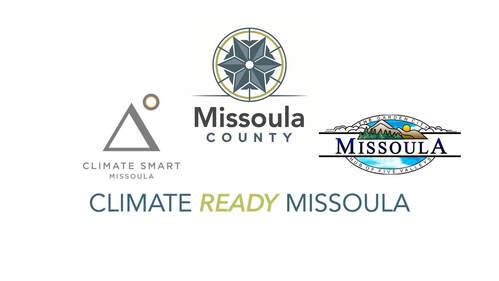Implementation in the Buildings, Land Use, and Transportation sector focuses on incorporating the relevant Climate Ready Missoula strategies in upcoming and ongoing planning efforts.
If you would like to receive more information or would like to apply to join the working group, contact Caroline Lauer.
If you would like to receive more information or would like to apply to join the working group, contact Caroline Lauer.
Related Upcoming and Ongoing EffortsThere are many ongoing and upcoming planning efforts that intersect with Climate Ready Missoula's goals and strategies. The Buildings, Land Use, and Transportation working group is currently focused on the efforts listed below. Click on each to learn more about each effort.
Community planning assistance for wildfire (CPAW)
The Community Planning Assistance for Wildfire policy and regulation assessment was initiated by CAPS with involvement by Office of Emergency Management, Public Works, Missoula Rural Fire. The goal is to reduce risk of wildfire to structures and communities by addressing the home ignition zone through a combination of regulatory measures and voluntary programs. cskt Climate change advisory committee
This is an effort of the Confederated Salish and Kootenai Tribes (CSKT) of the Flathead Reservation. The CCAC plan is designed to set standards for decision making, and serve as reference regarding methods and opportunities for collaboration within the various entities of the Tribal government and community. missoula county zoning update
This is a comprehensive update to the Missoula County zoning code to reflect Missoula County’s growth policy, including the Missoula Area Mapping Project and Climate Ready Missoula. With a few exceptions, these zoning regulations will apply not to the entire county but to those parts of the county that are closer to the urban area (specifically the area that was included in the Missoula Area Mapping Project). These zoning regulations also will not apply within the City of Missoula, which has its own zoning code. mullan area master plan + BUILD GRANT
The Mullan Area Master Plan is a joint city-county planning process which will adopt new growth policy land use designations for the area and implement a new set of zoning regulations. The goal of the effort is to provide some relief to Missoula's housing supply challenges by increasing the amount of allowable housing units, requiring diversity in housing types, and requiring land use patterns and transportation facilities that will result in walkable, bikeable connected neighborhoods. The Better Utilizing Investments to Leverage Development, or BUILD Transportation Discretionary Grant program, provides a unique opportunity for the DOT to invest in road, rail, transit and port projects that promise to achieve national objectives. Together with the City of Missoula, Missoula County has received a BUILD Grant for the Mullan Road area. If awarded, the grant would help reduce congestion, improve public safety and create economic development in the area of Mullan Rd, Mary Jane Blvd, England Blvd, and George Elmer Dr. office of neighborhoods community survey
The Office of Neighborhoods is developing a survey to assess quality of life and areas of need in Missoula's neighborhoods. subdivision and townhome exemption development updates
These updates are opportunities to streamline, clarify, and update the subdivision and TED regulations while considering the values and high quality development expectations of the community. Working Group MembersAndrew Hagemeier, Missoula County Community & Planning Services Karen Hughes, Missoula County Community & Planning Services Chase Jones, City of Missoula Energy Conservation and Climate Action Gwen Lankford, Sapphire Strategies Caroline Lauer, Climate Smart Missoula Diana Maneta, Missoula County Community & Planning Services Laval Means, City of Missoula Development Services Tara Osendorf, City of Missoula Transportation Division Aaron Wilson, City of Missoula Transportation Division Laurie Yung, University of Montana |
Strategies of InterestWithin the existing planning efforts detailed to the right, there are several intersections with the Climate Ready Missoula plan. In total, 38 of the plan's 77 strategies are already represented in these plans, representing multiple sectors of Climate Ready Missoula. Implementing these strategies will be a multi-year process, but ensuring they are included in ongoing efforts is a key first step. Click below to learn more about each strategy.
wildfire smoke, heat, and health
buildings, land use, and transportation
water
ecosystems and wildfire
agriculture
emergency preparedness and response
business, recreation, and tourism
energy
|
